Abstract
The substances belonging to the sterigmatocystin group bear a close structural relationship to aflatoxins. When demethylsterigmatocystin (DMST) was fed to Aspergillus parasiticus NIAH-26, which endogenously produces neither aflatoxins nor precursors in YES medium, aflatoxins B1 and G1 were produced. When dihydrodemethylsterigmatocystin (DHDMST) was fed to this mutant, aflatoxins B2 and G2 were produced. Results of the cell-free experiment with S-adenosyl-[methyl-3H]methionine showed that first the C-6-OH groups of DMST and DHDMST are methylated to produce sterigmatocystin and dihydrosterigmatocystin (O-methyltransferase I) and then the C-7-OH groups are methylated to produce O-methylsterigmatocystin (OMST) and dihydro-O-methylsterigmatocystin (DHOMST) (O-methyltransferase II). However, no methyltransferase activity was observed when either OMST, DHOMST, 5,6-dimethoxysterigmatocystin, 5-methoxysterigmatocystin, or sterigmatin was incubated with the cell extract. Treatment of the cell extract with N-ethylmaleimide inhibited O-methyltransferase I activity but not that of O-methyltransferase II. Furthermore, these O-methyltransferases were different in their protein molecules and were involved in both the reactions from DMST to OMST and DHDMST to DHOMST. The reactions described in this paper were not observed when the same mold had been cultured in YEP medium.
Full text
PDF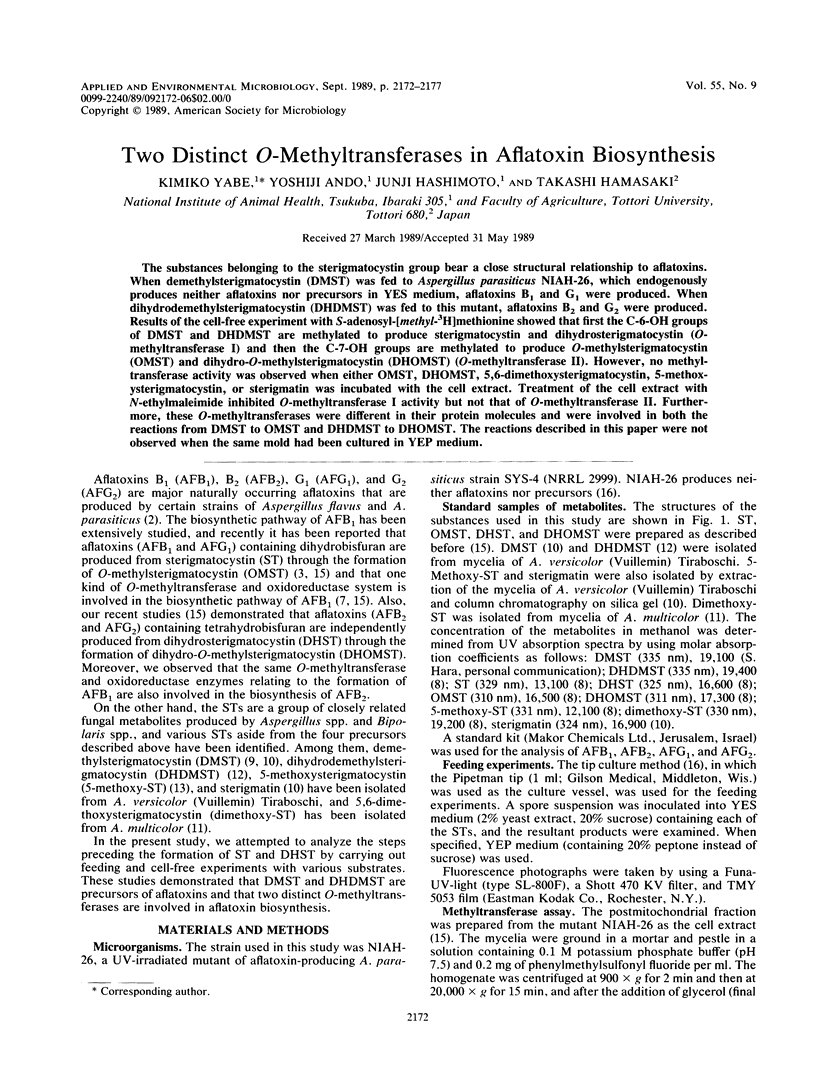
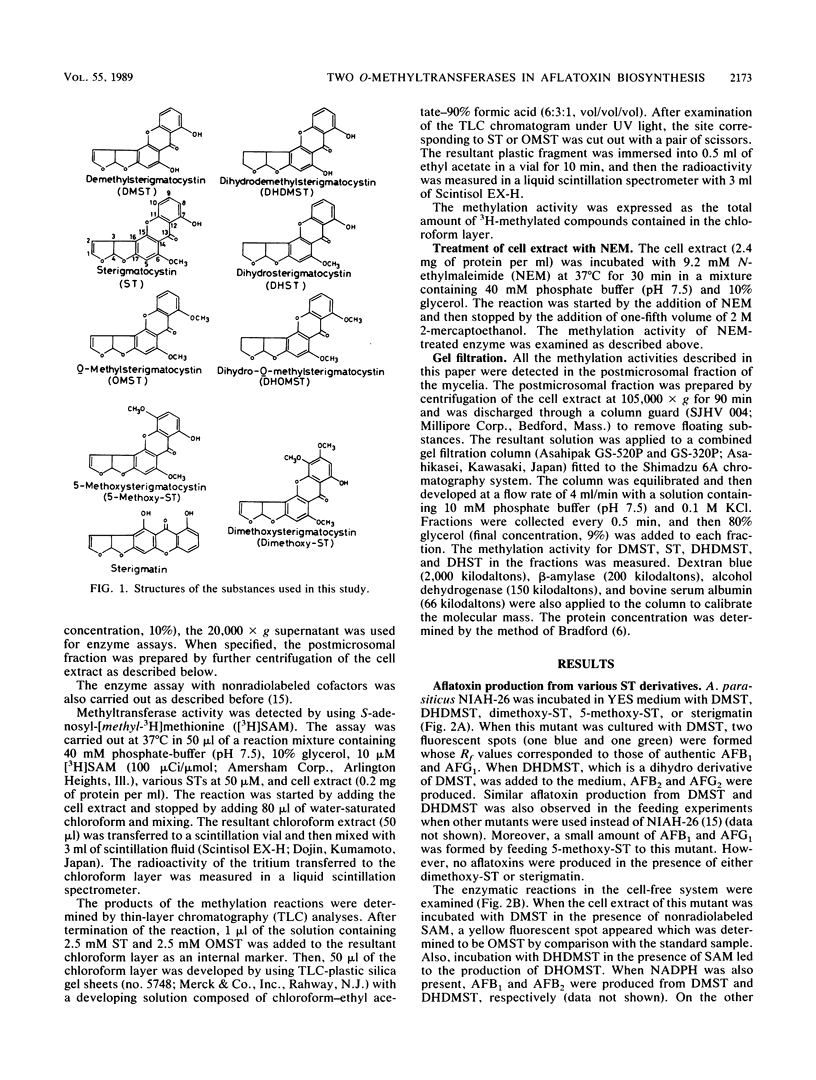
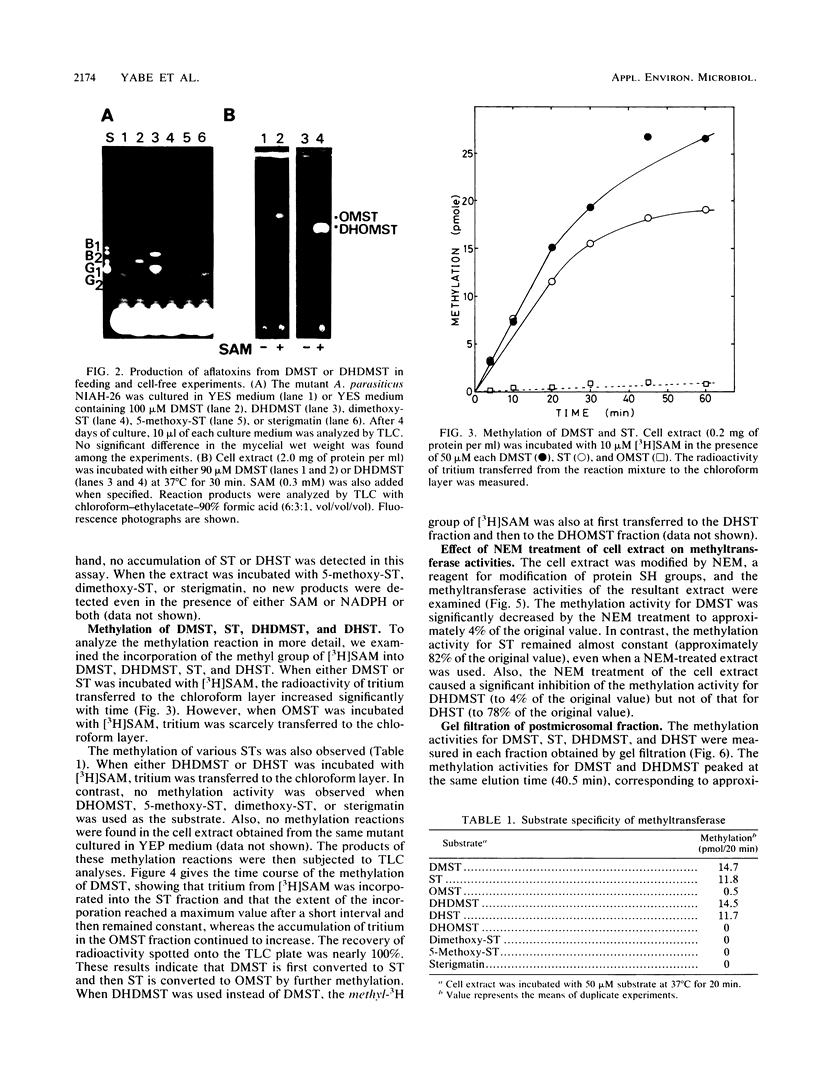
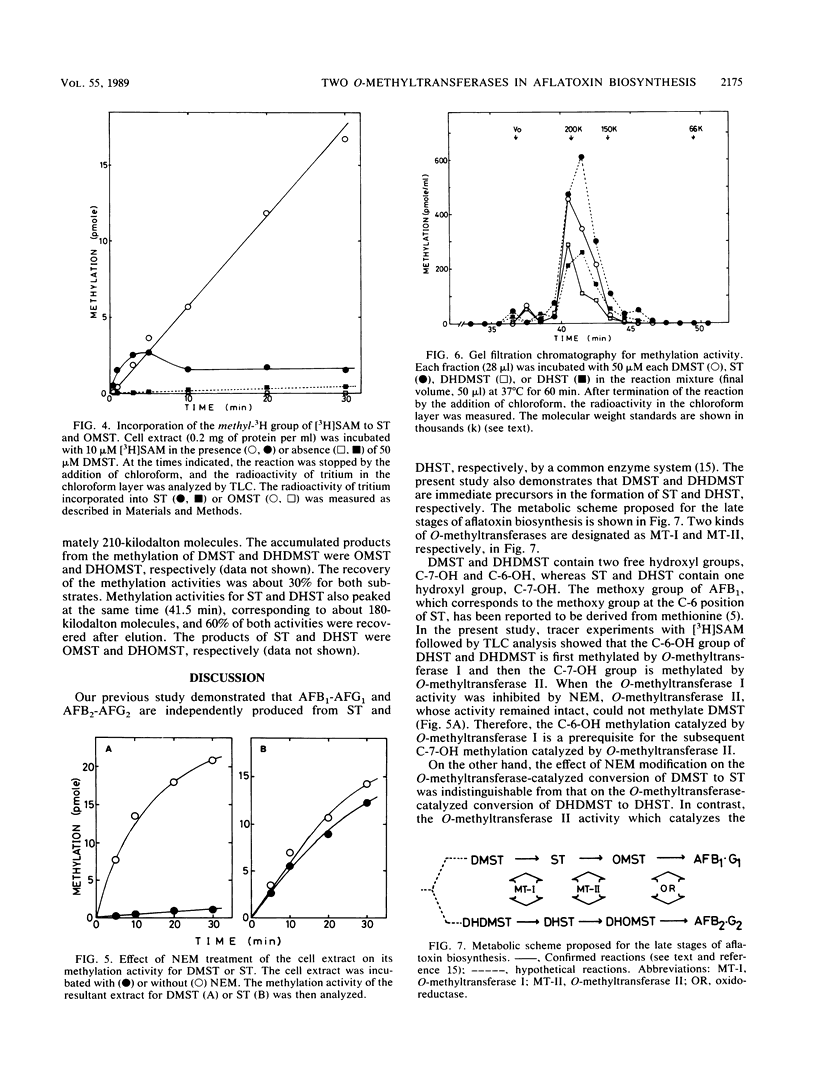
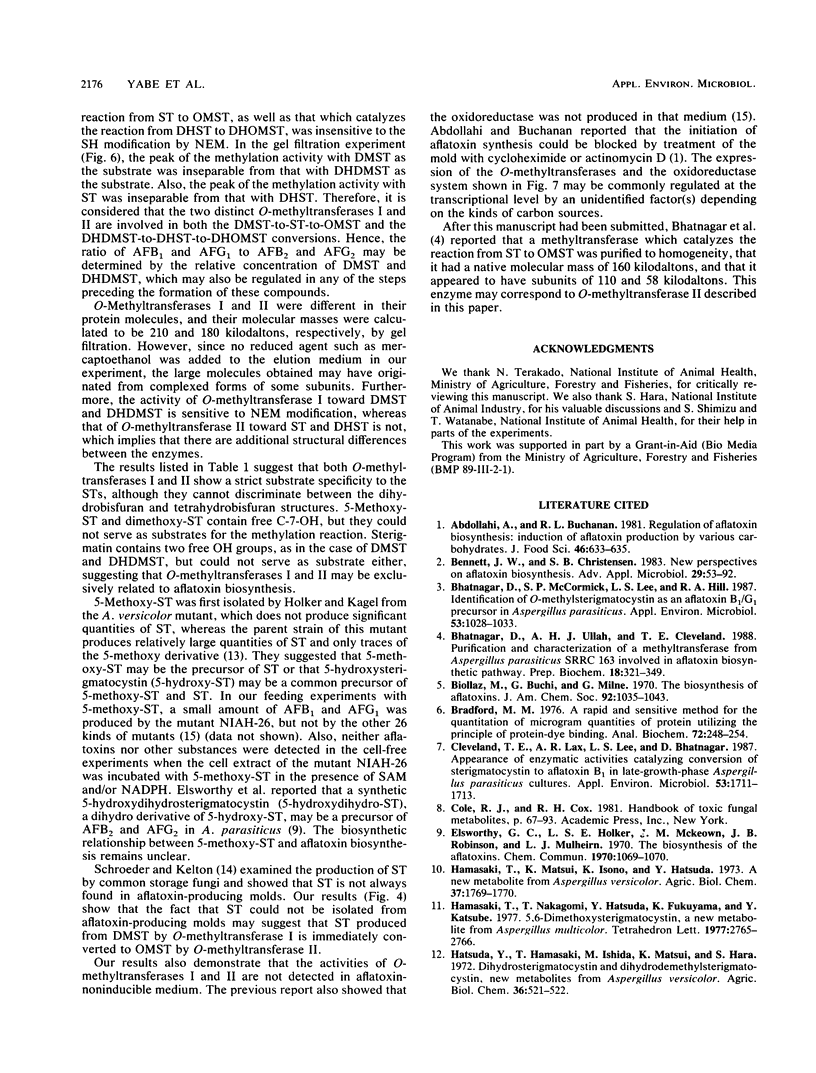

Images in this article
Selected References
These references are in PubMed. This may not be the complete list of references from this article.
- Bennett J. W., Christensen S. B. New perspectives on aflatoxin biosynthesis. Adv Appl Microbiol. 1983;29:53–92. doi: 10.1016/s0065-2164(08)70354-x. [DOI] [PubMed] [Google Scholar]
- Bhatnagar D., McCormick S. P., Lee L. S., Hill R. A. Identification of O-methylsterigmatocystin as an aflatoxin B1 and G1 precursor in Aspergillus parasiticus. Appl Environ Microbiol. 1987 May;53(5):1028–1033. doi: 10.1128/aem.53.5.1028-1033.1987. [DOI] [PMC free article] [PubMed] [Google Scholar]
- Bhatnagar D., Ullah A. H., Cleveland T. E. Purification and characterization of a methyltransferase from Aspergillus parasiticus SRRC 163 involved in aflatoxin biosynthetic pathway. Prep Biochem. 1988;18(3):321–349. doi: 10.1080/00327488808062532. [DOI] [PubMed] [Google Scholar]
- Biollaz M., Büchi G., Milne G. The biosynthesis of the aflatoxins. J Am Chem Soc. 1970 Feb 25;92(4):1035–1043. doi: 10.1021/ja00707a050. [DOI] [PubMed] [Google Scholar]
- Bradford M. M. A rapid and sensitive method for the quantitation of microgram quantities of protein utilizing the principle of protein-dye binding. Anal Biochem. 1976 May 7;72:248–254. doi: 10.1006/abio.1976.9999. [DOI] [PubMed] [Google Scholar]
- Cleveland T. E., Lax A. R., Lee L. S., Bhatnagar D. Appearance of enzyme activities catalyzing conversion of sterigmatocystin to aflatoxin B1 in late-growth-phase Aspergillus parasiticus cultures. Appl Environ Microbiol. 1987 Jul;53(7):1711–1713. doi: 10.1128/aem.53.7.1711-1713.1987. [DOI] [PMC free article] [PubMed] [Google Scholar]
- Schroeder H. W., Kelton W. H. Production of sterigmatocystin by some species of the genus Aspergillus and its toxicity to chicken embryos. Appl Microbiol. 1975 Oct;30(4):589–591. doi: 10.1128/am.30.4.589-591.1975. [DOI] [PMC free article] [PubMed] [Google Scholar]
- Yabe K., Ando Y., Hamasaki T. Biosynthetic relationship among aflatoxins B1, B2, G1, and G2. Appl Environ Microbiol. 1988 Aug;54(8):2101–2106. doi: 10.1128/aem.54.8.2101-2106.1988. [DOI] [PMC free article] [PubMed] [Google Scholar]
- Yabe K., Nakamura H., Ando Y., Terakado N., Nakajima H., Hamasaki T. Isolation and characterization of Aspergillus parasiticus mutants with impaired aflatoxin production by a novel tip culture method. Appl Environ Microbiol. 1988 Aug;54(8):2096–2100. doi: 10.1128/aem.54.8.2096-2100.1988. [DOI] [PMC free article] [PubMed] [Google Scholar]



